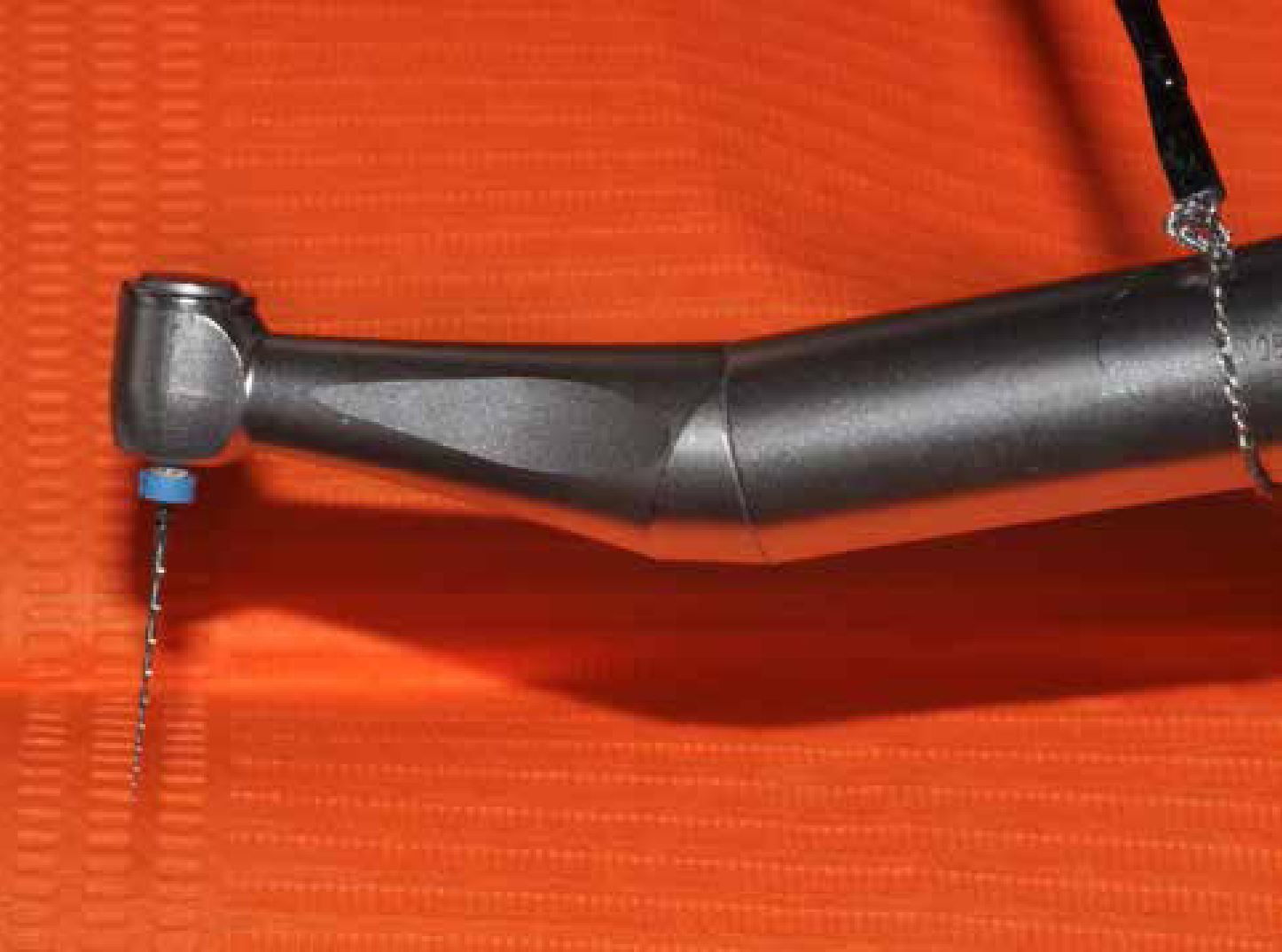Article
Accurate determination of working length is an important step in root canal instrumentation, as incorrect preparation length can lead to:
It has been shown that the working length of a canal decreases after root canal preparation.2 Therefore, constant reconfirmation of the preparation endpoint is desirable. This is normally achieved by using an ‘apex locator’ in combination with regular radiographic controls.
The ‘dynamic working length determination’ technique requires the preparation of a ligature on the endodontic handpiece using a stainless-steel orthodontic wire (Figure 1). The apex locator circuitry (the ‘file holder’ part) is directly connected to the ligature, rather than to the file, and the lip clip is connected to the patient's body to complete an electric circuit. It should be noted that this technique is not possible if the endodontic handpiece contains ceramic components, as they will interfere with the electric circuit. It is worth mentioning that some ‘apex locators’ provide delayed readings, thus these should not be used for ‘dynamic working length determination’, as there is a risk of overinstrumentation as a result of this factor.

Combinations of ‘apex locator’ and endodontic handpieces and motors are available on the market, with simultaneous preparation and measuring functions; apart from the need to purchase further equipment, the combination ‘apex locator’ and handpiece size is larger than standard ones, making it more difficult to position when working on posterior segments. Furthermore, they might not be fully autoclavable, as an ‘apex locator’ is incorporated in the handpiece.
The values of this technique are that:

